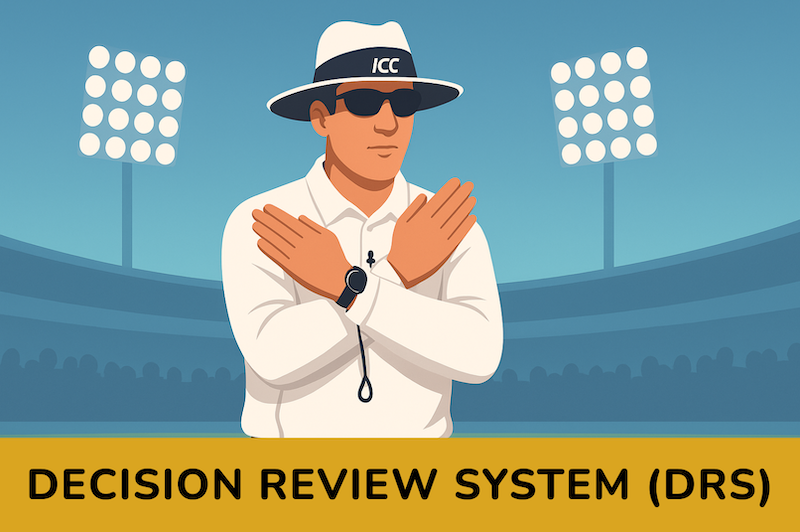
Cricket has seen everything. The calm of Tests, the thrill of one day matches, and the madness of T20s. But now, a new chapter is ready to begin. It is called Test Twenty, a fresh format that aims to bring the best of both worlds together.
The idea is simple but clever. Take the depth and patience of Test cricket, mix it with the speed and excitement of T20s, and create a full match that finishes in one day. Planned to begin in January 2026, this format is being called cricket’s fourth official format after Tests, ODIs, and T20s.
How does it work?
A Test Twenty match combines strategy and speed in a clear and simple setup:
- The match will have 80 overs in total.
- Each team will bat twice, with two innings of 20 overs each, similar to a Test match.
- The score from the first innings continues into the second, so every run counts from start to finish.
- All four results are possible — win, loss, tie, or draw.
- If both teams finish with the same total score, a Super Over will decide the winner.
- In the second innings of the team batting second, a draw is possible until they lose five wickets. Once the fifth wicket falls, that option is gone and the match must end in a win or loss, based on the aggregate runs.
- If weather interrupts play and prevents a clear result, the match is declared a draw, keeping the traditional spirit of Test cricket alive.
This format keeps the heart of Test cricket alive while giving it a faster, modern look. It feels like a one day Test match played with the energy of a T20.
Who is behind this idea
The person leading this new format is Gaurav Bahirvani, the founder and CEO of The One One Six Network. He describes Test Twenty as a bridge between generations, a format that keeps the heart of Test cricket alive while making it more exciting for today’s youth. His vision is to help young fans enjoy the game’s classic side without losing its fast rhythm.
Supporting him are some of cricket’s biggest legends — AB de Villiers, Matthew Hayden and Sir Clive Lloyd. They are part of the advisory board that guides the format, its rules, and its direction. As AB de Villiers beautifully said, “It is innovation with intent. It respects tradition and gives the next generation a new dream to follow.”
For the youth, powered by technology
Test Twenty is not just another cricket league. It is also a pathway for young and upcoming players. The main event, called the Junior Test Twenty Championship (JTTC), will feature players aged between 13 and 19. It gives teenagers a chance to play a serious and global competition, where they can show both their skill and temperament.
To make the process fair, the selection will use AI video analysis and motion sensor technology to study how players move, react, and make decisions on the field. There is also a rating system called the Test Twenty Intelligence Index (TTII) that checks how smartly a player plays the game, not just how hard they hit the ball. The main aim is simple — to find real talent from every part of the world and give them a fair and open platform to shine.
Explore More Stories

2005 Ashes: The Summer Cricket Became Theatre
The 2005 Ashes was more than just a cricket series. It was a rollercoaster of emotion, courage, and unforgettable moments that brought Test cricket back to life. England’s long wait finally ended, and the world watched history unfold.

The Uneasy Marriage of Technology and Umpiring: How DRS Changed Cricket
When one wrong decision could change the course of history, cricket turned to technology. From Bucknor’s blunders to the birth of DRS, this is the story of how the game learned to trust machines without losing its human heart.
The teams and structure
The first season of Test Twenty will have six teams in total. Out of these, three teams will be from India, and three international teams will come from Dubai, London, and the United States. Each team will have 16 players, with eight from India and eight from other countries.
Players will enter through two main ways — open trials or direct recommendations from trusted coaches and former cricketers. The organisers also plan to include some well-known sports and entertainment families as co-owners of the teams. This mix of young talent, global players, and star presence is expected to bring both excitement and attention to the new format.
What makes it different
Test Twenty comes with a few new rules that make the game lively, fair, and full of surprises:
- Powerplay: One per team for four overs, taken anytime in either innings. Only two fielders allowed outside the circle. If not used by the 7th over of the second innings, it applies automatically in overs 7–10.
- Follow-on: Can be used if the team batting second trails by 75 runs or more after the first innings.
- Early Collapse Rule: If a team is bowled out before 10 overs in their first innings, the other side gets three extra overs.
- Bowler limit: Each team can use five bowlers, and each bowler can bowl up to eight overs in total.
- Over rate penalty: Each innings must finish within the set time. If a team is slow, they lose one timeout and give away five runs.
- Super Over: If scores are level, a one-over eliminator decides the winner. If still tied, the team with more boundaries across both innings wins.
The bigger dream
The first two seasons of Test Twenty will be played in India before moving to other countries. The goal is not to replace Test cricket but to keep its soul alive in a modern way.
As Sir Clive Lloyd said, the game has always evolved, but never with this much care. “Test Twenty brings the heart of cricket back in a form today’s generation will love.”
The dream is simple — to make the oldest format exciting again and remind young fans that patience and skill can be just as thrilling as power and speed.
Final word
Cricket is changing again, but this time the past is coming along with it. Test Twenty keeps the spirit of Test cricket alive while adding the thrill of the modern game.
If it works, it could bring old and new fans together and remind everyone that cricket is more than big hits — it is about skill, patience, and heart.





